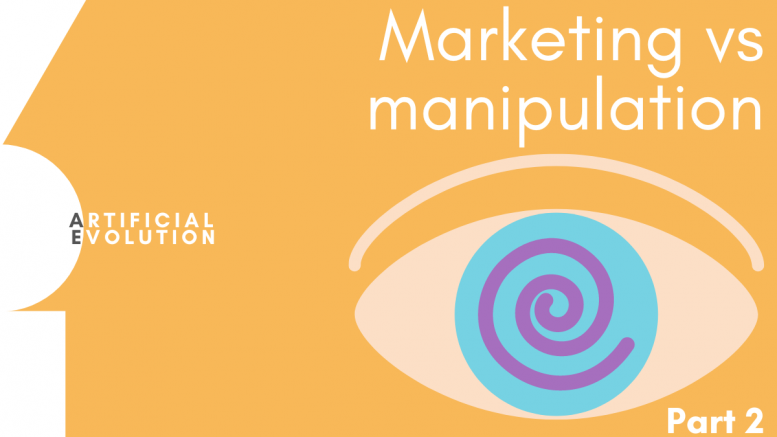Author’s note: I was sucked into a random blackhole that appeared in my living room a month ago. It warped space-time and I returned last week. That is totally the reason I haven’t written for a while. Not because I was occupied or/and am lazy. Also the good people at Reputation Today have understood this and given me the opportunity to contribute once a month rather than the weekly series earlier.
You know, just in case of other black holes and such.
So where were we…
Right off the bat, straight into manipulating kids.
Wait that sounds bad.
In this film by the WHO, they discuss the scenario and possible solutions to a problem that builds towards long-term “brain melting” as one of the kids in the video mentioned.
The goal of responsible marketing is never to manipulate. It’s about nudging your audience to pick their brand when they need that product in their lives.
This mini-doc by the YouTube channel Wendover Productions (highly recommended for curious minds) drives the point specifically about strange and hypnotic advertising practices. Are the illegal? Probably not. Are they unethical? Perhaps.
The structure of planning that goes behind deceptive marketing is by design. It varies in radius, but the method is always well planned.
False Advertising
Subway had this thing they did back in the early 2010s. The sandwiches we know and love were marketed as foot-longs or 12 inches long. Whereas in real life through third party testing, they were almost always 11 inches or shorter. You might think that it isn’t that egregious as forcing cigarette ads but 1 inch saved of every foot long is an 8% addition to their bottom line. Not cool.
Emotional Triggering
This particular technique is more or less on the grey line. If done right, it does spark curiosity and interest for the brand. The focal point for viewers is to market an emotional response to a potential event in their lives. Fear and greed are usually the emotions they target. Worried about what will happen to your child as a single father after you’re dead? Buy insurance. People on the road are idiots? Buy safer tires.
Subliminal messaging
Probably the closest thing we have to planting ideas into the audience’s mind. There isn’t much more to it. Flashing images, words written in specific patters, constant notification ads based on what your smart speaker listens to are all examples of this technique. To the twisted mind, this is probably the most effective and some would argue, most nefarious way of gaining brand recall.
The most important thing to understand about subliminal messaging though is ‘the nudge’. It’s not about hypnosis, pushing the audience to take a decision when they’re already primed. So although its not a sure fire technique, its subliminal perception that is usually the goal.
The SciShow by John Green (Yes, the same John Green who wrote The Fault in our stars) talks about this concept in detail including how much of a hoax it is and still how subliminal perception can be triggered.
Surrogates and the like
“Oooh… you want to have a good time with your friends at an obvious bar-type scenario? You want to show your manliness and party the hell out of yourself tonight? Try our refreshing, bubbly… bottled drinking water.”
In India, cigarette and alcoholic beverages were never allowed to advertise on mainstream platforms like TV and newspapers. So they switched to surrogate products like packaged water, music CDs and strangely, bravery awards.
It’s not like they could sponsor an IPL team with the literal exact name of a whisky brand could they.
Apparently they could.
The maximum out of the minimum.
Looking at the landscape today, I do believe the internet is the next frontier for manipulation. Although I can’t place it, I’m pretty certain Voot and some other OTTs have allowed alcohol brands to advertise in-app.
From a marketers dharma, the goal is to sell. And manipulation requires intellect and a strong sense of human behaviour and psychology. Having said that, I’m pretty sure there isn’t a cabal of advertisers meeting annually somewhere in a mansion that decide what we’ll buy for the calendar year.
Information on knowing how something works is specific to self-learning. The motive behind this piece is to tell you the situation as it stands. Just make sure your kids don’t get too excited next time Ronald McDonald tells them that McDonalds is a wonderland.
Stay curious. Stay Secure.
See you next week.
The views and opinions published here belong to the author and do not necessarily reflect the views and opinions of the publisher.



Be the first to comment on "Marketing vs manipulation Part 2"